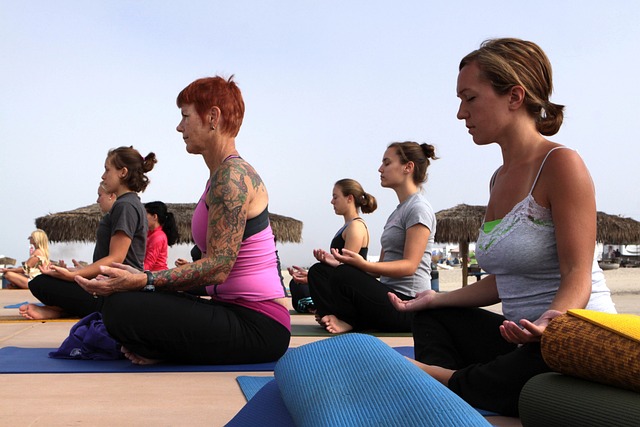
Mindfulness: Nurturing Peace and Presence in a Hectic World
In today's world, where everything goes so fast, distractions are everywhere, and stress appears in different ways, doing things to get quiet and be present can feel impossible. Yet, the effective cure of mindfulness has been hiding within chaos for ages. This inherited technique, stemming from the principles of observation and tolerance, serves as a way to get calmness from the inside and brings clarity to the mind. In this article, we will dive into the meaning of mindfulness, its realizations in the practical world, and the objectification of the tremendous positive influences of mindfulness on our everyday lives.
Introduction to Mindfulness
What is Mindfulness?
Mindfulness could be best described as the art of consciously focusing on the present moment in our lives without any sort of judgment. This means that an individual understands all their own emotions and intuitions, as well as the environment surrounding them, through a sense of openness and curiosity.
Significance of Contemplation Every Day
Where you have the whole world rushing by, mindfulness is the antipole, which means that you can grow a stronger relationship with yourself and discover other people. Enabling individuals to get a grip on the difficulties of life and deal with them in a more mature way, mindfulness does it by increasing awareness and acceptance.
The Practice of Mindfulness
Techniques for Practicing Mindfulness
Several techniques can be applied to develop the art of mindfulness, such as mindfulness meditation, mindful breathing, body scanning practices, and physically influential practices like yoga.
The Advantages of Integrating Intention or Awareness into Daily Activities
Promoting mindfulness by choosing it as a part of day-to-day tasks can result in positive effects such as decreased stress, improved attention and concentration, higher emotional intelligence, and an increased state of well-being in general.
Mindfulness Meditation
Understanding Mindfulness Meditation
Contemplation is summed up with observance of the present moment in its natural state and acceptance of thoughts and sensations that may appear to the conscious mind.
Approaches for Successful Meditation at the Present Moment
To practice mindfulness meditation, select a serene space, dim down the lights, sit comfortably, pay attention to the breath or a chosen anchor (the preferred means of concentration throughout meditation), and gently return one's attention to the present whenever the mind begins to wander.
Mindfulness in Stress Reduction
How Mindfulness Assists in Mental Relaxation
Because it helps in relaxing the mind, gives insight into one's self, and shows compassion for unpleasant feelings and outcomes, stress is diminished.
Mindfulness Methods to Use in Stressful Circumstances
When the stress levels spike, taking control of your breaths, doing progressive muscle relaxation, and engaging in mindfulness-based stress reduction can be the most effective methods to quiet down and bring back peace inside you.
Enhancing Focus and Concentration
The Contribution of Mindfulness to Our Attention and Concentration
The practice of mindfulness cultivates thinking by paying attention to current events so that the risk of distraction is minimized. In addition, it develops cognition to its advantage.
Actionable Advice on Building Focus Through Mindfulness
Keep focus and concentration highly productive by using mindfulness tactics like single-tasking, intending, and taking breaks frequently for rest and refreshment.
Mindfulness in Emotional Regulation
Handling Emotions with Mindfulness
Mindfulness gives individuals the chance to control their emotions and avoid being overwhelmed. By practicing mindfulness, they become more emotionally resilient and self-regulated.
Ways to Build Emotional Balance Using Mindfulness
Compassion, contentment, and emotional stability are built up from methods like RAIN (Recognize, Accept, Investigate, and Non-Attachment) and loving-kindness meditation.
Mindfulness in Relationships
Mindful presence increases empathy, opens communication, and allows for active listening, strengthening relationships.
Mindful Communication Practices
Practices like mindful communication, kind listening, and expressing gratitude deepen interpersonal connections and foster harmony in relationships.
Mindfulness in Daily Activities
Mindfulness can be infused into simple daily activities like walking, eating, or even washing dishes, turning them into moments of awareness and appreciation.
Mindfulness and Physical Health
Mindfulness and Physical Activity
Mindfulness is linked to improved physical health, including lower blood pressure, stronger immunity, and better pain management.
Mindfulness and Mental Health
Studies show that mindfulness is effective in treating mental health disorders such as anxiety and depression by reducing rumination and enhancing self-compassion.
Mindfulness in the Workplace
Benefits of Mindfulness in the Workplace
Mindfulness in the workplace improves employee well-being, enhances creativity, and fosters a positive work environment.
Implementing Mindfulness at Work
Employers can support mindfulness by offering meditation programs, promoting work-life balance, and encouraging mindful breaks.
Cultivating Gratitude through Mindfulness
Mindfulness fosters gratitude by encouraging individuals to appreciate the present moment and recognize the interconnectedness of all things.
Mindfulness for Self-Compassion
Developing Self-Compassion Through Mindfulness
Mindfulness helps individuals cultivate self-compassion by accepting themselves with kindness and treating themselves with the same care they would show a friend.
Conclusion
Mindfulness is a powerful practice that helps us navigate the complexities of life, fostering inner peace and well-being. By incorporating mindfulness into our daily routines, we can develop a deeper understanding of the world and approach it with generosity and care.






Leave a Comment